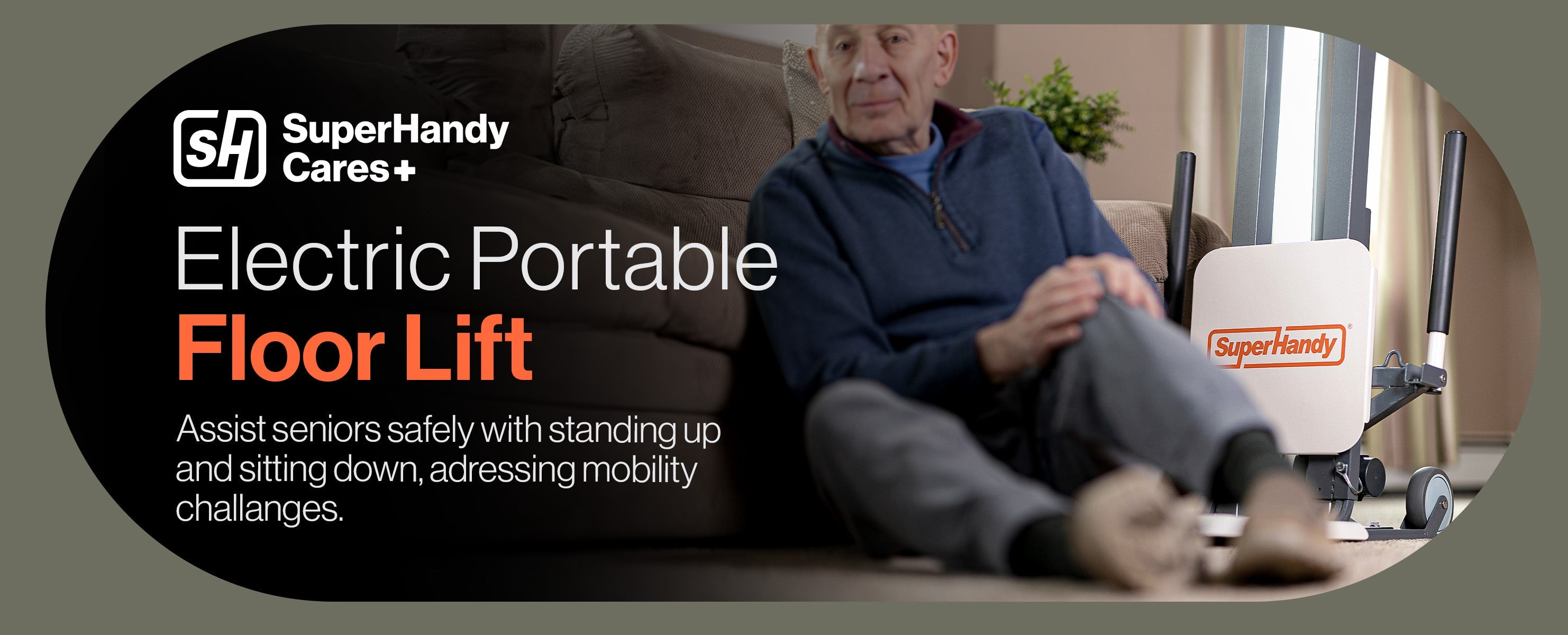An electric floor-to-stand lift is a vital mobility aid that helps caregivers safely transfer individuals who have limited strength, balance, or mobility. Unlike home elevators, these portable lifts are designed to help someone rise from the floor or seated position to a standing position with minimal strain. They reduce the risk of injury for both the user and the caregiver, while promoting independence and dignity. SuperHandy’s lift models are built with durability and ease of use in mind, offering caregivers peace of mind and users reliable everyday support.
Key Takeaways
-
Safe Transfers: Provides a secure way to move from sitting or lying down to standing.
-
User-Centered Design: Supports seniors and people with disabilities who cannot stand independently.
-
Caregiver Support: Reduces the physical strain and risk of injury for caregivers.
-
Compact & Mobile: Most models are on wheels, making them easy to move between rooms.
-
Custom Features: Options such as padded knee supports, adjustable handles, and rechargeable batteries.
Understanding the Electric Floor-to-Stand Lift
What It Does
This lift assists a person from a low or seated position into a stable standing position using an electric motor. With padded supports and secure straps, it ensures both comfort and safety during transfers. Caregivers operate the lift with simple controls, reducing manual lifting and preventing falls.
Who It’s For
-
Seniors with reduced leg strength or balance issues.
-
People with disabilities who need help standing.
-
Care environments such as private homes, nursing facilities, or rehabilitation centers.
SuperHandy’s focus on compact design makes it especially practical for home use, while still durable enough for professional care environments.
Key Features to Look For
|
Feature |
Why It Matters |
|---|---|
|
Electric Operation |
Push-button lifting reduces caregiver effort. |
|
Padded Knee Support |
Provides comfort and stability during transfer. |
|
Safety Straps / Harness |
Prevents slipping or falls during use. |
|
Adjustable Handles |
Makes it easier for different users and caregivers. |
|
Wheeled Base |
Improves mobility and positioning around the home. |
|
Rechargeable Battery |
Allows cordless operation; usually includes a backup. |
Safety and Compliance
Safety should always come first:
-
Ensure the lift is certified to relevant medical device standards.
-
Always follow weight capacity guidelines.
-
Use the lift only on flat, stable surfaces.
-
Train caregivers on proper use to avoid misuse or accidents.
Using the Lift Safely
-
Position the lift close to the user.
-
Secure knee pads and safety straps.
-
Operate the electric control to gently lift the user.
-
Support until the user is safely standing.
-
Use the reverse function to return to a seated or lying position.
Budgeting and Costs
-
Typical Price Range: Depending on brand and features.
-
Additional Costs: Spare batteries, slings/straps, or extended warranties.
-
Funding Options: Some regions offer disability grants or healthcare funding support.
Maintenance
-
Recharge batteries regularly.
-
Check straps, pads, and casters for wear.
-
Have the lift serviced yearly by an authorized provider.
-
Keep it clean with non-abrasive wipes.
FAQ
Is it easy for one person to use?
Yes, most floor-to-stand lifts are designed for a single caregiver to operate.
How portable is it?
They usually come with caster wheels for moving between rooms.
Can it lift from the floor after a fall?
Yes — many models are designed to safely help someone up after a fall.
How long does the battery last?
Most rechargeable batteries last multiple transfers before needing a charge.

